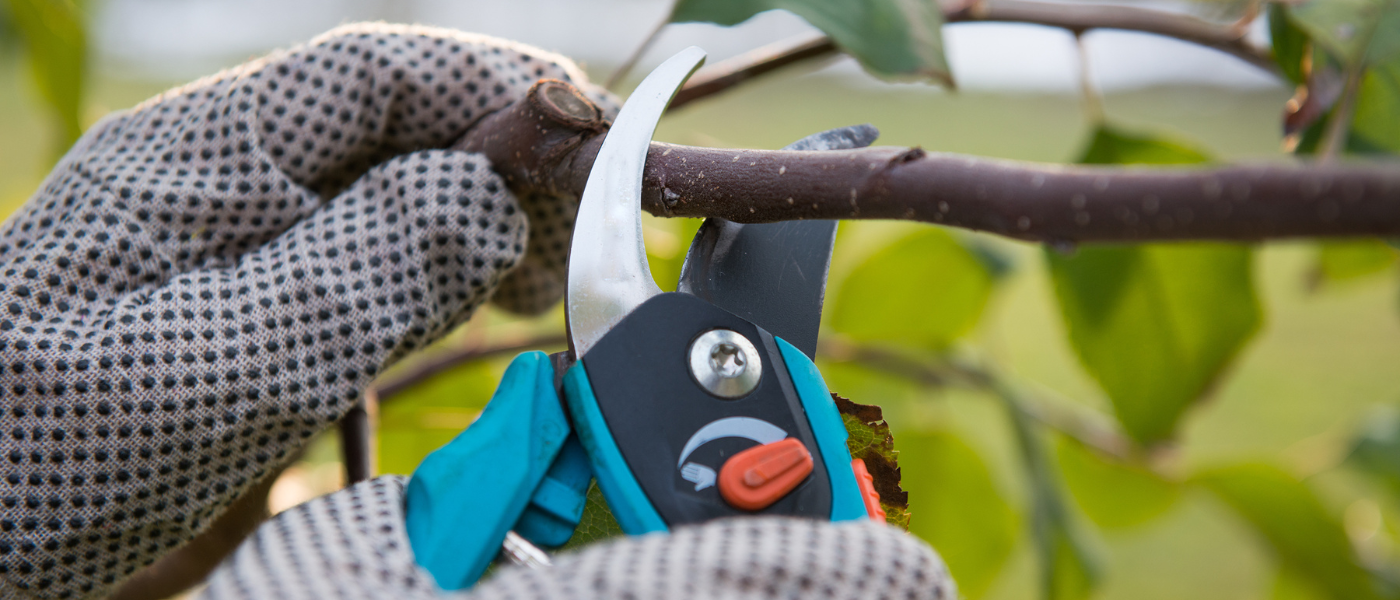Can I Prune My Trees in the Winter?
Maintaining healthy trees in your yard is paramount as it is crucial in sustaining a clean and healthy environment. One effective method to ensure the well-being of your trees is through the practice of pruning. But what about pruning trees during the winter season? The answer is a resounding Yes, but it's essential to consider certain considerations before proceeding. In the following paragraphs, we'll delve into the specifics and provide valuable insights on the best practices for winter tree pruning. So, without further ado, let's explore the fascinating world of tree care in the winter months!

Why is Tree Pruning in Winter Beneficial?
Pruning is an incredibly important technique that plays a critical role in maintaining your beloved trees' shape, health, and growth. When it comes to winter pruning, it brings forth many benefits that are worth mentioning.
Firstly, by engaging in winter pruning, you boost the overall health of the tree and create the perfect conditions for vibrant new spring growth. Picture branches burst into life, adorned with blossoms blooming in abundance, creating a breathtaking spectacle for all to admire.
Additionally, this practice is a preventive measure against developing diseases that could harm your tree. By keeping your tree robust and resilient, it stands tall against any threats that may come its way.
Moreover, winter presents the perfect opportunity to effortlessly reduce the height or spread of your tree without compromising its overall shape and aesthetic appeal. This allows you to meticulously sculpt your tree to perfection, creating an exquisite piece of natural art that blends harmoniously with your landscape. Embracing the art of winter, pruning truly nurtures your trees, ensuring they thrive every season and transforming your landscape into a picturesque haven of natural beauty that will leave everyone in awe.
What Type of Trees Can Be Pruned in Winter?
Most deciduous trees, such as oak, maple, and birch, are an excellent choice for pruning during the winter season. Winter pruning is specifically suitable for trees that have suffered extensive bark damage or decay caused by insects, like beetles or borers. Additionally, species like apple and sycamore also derive great benefits from winter pruning, as it promotes abundant fruits and stimulates healthy foliage growth. However, it's important to note that pine and spruce trees are the exceptions to this rule, as they are known to have poor responses to winter pruning due to their unique characteristics.
When in the Winter is the Best Time to Prune?
Pruning during the winter dormant season has several advantages, especially in late winter. The ideal time to prune is when the temperature is above freezing, but the sap has not yet started to move within the tree. By pruning during this period, the wounds caused by trimming will heal faster as they quickly close up when new growth begins to emerge.
Additionally, pruning during the dormant phase is less stressful for the tree than when it is actively growing, allowing it to conserve energy and focus on other essential processes. During the winter dormant season, when the tree is in a state of rest, its physiological processes slow down. This dormancy period provides an opportunity to shape and direct the tree's growth in a controlled manner. By strategically removing branches, deadwood, or overcrowded areas, you can promote better air circulation, prevent disease, and improve tree health.
Moreover, pruning during the late winter months minimizes the risk of stimulating premature growth, which can be vulnerable to frost damage. The tree's energy is conserved during this time, enabling it to allocate resources to necessary functions like root development and nutrient absorption.
Thoughtful and well-timed pruning during the winter dormant season offers numerous tree benefits. It facilitates faster healing, reduces stress on the tree, and also aids in maintaining its overall health and vitality.
How to Prune Trees in Winter Safely
When it comes to winter pruning, it's crucial to understand the potential risks involved. That's why it's important to equip yourself with the right tools and to familiarize yourself with the necessary safety tips to ensure a successful and safe pruning experience.
First and foremost, using sharp and clean pruning equipment is essential. This ensures precise cuts and minimizes the risk of spreading diseases between plants. By investing in high-quality pruning tools and regularly cleaning and sharpening them, you can maintain the health of your plants while achieving optimal results.
In addition to having the right tools, maintaining a solid grip on the branch you're cutting is paramount. This prevents any unexpected accidents due to slips or loss of control. You can confidently make your cuts without compromising safety by firmly holding the branch and positioning yourself in a stable stance.
When it comes to making the cuts themselves, aim for a 45-degree angle. This angle promotes proper healing and growth, minimizing the risk of damage or disease. Leaving approximately ¼ inch of the branch from the trunk also contributes to the plant's overall health, allowing for proper nutrient distribution and growth.
By following these precautions and incorporating them into your winter pruning routine, you can ensure the well-being of your plants while achieving the desired results. Safety should always be the top priority when engaging in pruning activities.
Trust a Professional for Winter Pruning
Taking care of trees during the winter season can be challenging, and not everyone possesses the expertise to handle it effectively. That's why it's crucial to enlist the services of an experienced tree care provider. These professionals will meticulously prune your trees, ensuring proper growth and vitality. With their extensive knowledge, specialized tools, and honed skills, they can complete the job safely and efficiently. So, if you find yourself uncertain about undertaking this task on your own, it's best to rely on the expertise of these professionals.
Conclusion
In conclusion, pruning your trees in winter has several benefits when done at the right time and in the right way. By pruning during the dormant months, typically from late fall to early spring, you'll promote new growth, prevent the spread of diseases, and enhance your garden's overall beauty. During this time, trees are in a state of rest, allowing them to heal more efficiently and allocate resources to new growth in the upcoming spring season.
Pruning during winter removes dead or damaged branches and helps shape the tree's structure, ensuring proper airflow and sunlight penetration. This promotes the development of strong and healthy branches, reducing the risk of breakage during storms or heavy winds. Additionally, winter pruning allows you to have a clearer view of the tree's structure without obstructing leaves, making it easier to identify any potential issues or areas requiring attention.
While pruning, taking necessary safety precautions such as wearing protective gear, using sharp and clean tools, and being aware of your surroundings is crucial. If you are unsure about how to prune or have complex pruning needs, it is recommended to consult with a professional arborist. Their expertise can provide valuable insights and ensure your trees receive the best care and attention.
Investing in winter pruning is an investment in your trees' long-term health and beauty. By taking the time to prune and maintain your trees during the dormant season, you not only enhance their aesthetic appeal but also contribute to their overall vitality. So, make the most of the winter months and give your trees the care they deserve to thrive and flourish.
You might also like
Athens Tree Care Blog

Book a Service Today
We will get back to you as soon as possible
Please try again later
We're available
- Mon - Sun
- Open 24 Hours
This website is for lead generation purposes only


